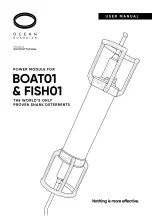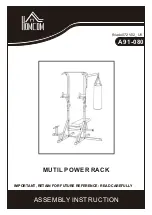
Cleaning Procedures for Modine Coated Coils and/or Cabinets
NOTE: Please follow proper safety policies, procedures and practices when working on HVAC
equipment.
ELECTRICAL SHOCK HAZARD
CUT HAZARD
Failure to follow this warning could cause
personal injury or death. Before performing
service or maintenance operations on unit,
always turn off main power switch to unit
and install lock(s) and lockout tag(s). Unit
may have more than one power switch.
Ensure electrical service to rooftop unit
agrees with voltage and amperage listed on
the unit rating plate.
Failure to follow this caution may result in personal
injury. Sheet metal parts may have sharp edges or
burrs. Use care and wear appropriate protective
clothing, safety glasses and gloves when handling
parts and servicing air conditioning equipment.
A scheduled and documented QUARTERLY cleaning procedure is REQUIRED for all HVAC/R
equipment coated with Modine coil and/or cabinet protection.
GENERAL INSTRUCTIONS: (
Detailed instructions to follow)
Remove surface loaded fibers – Coils Only
Surface loaded fibers or dirt should be removed prior to cleaning and/or water rinse to prevent further restriction of
airflow. If unable to back wash the side of the coil opposite that of the coils entering air side, then surface loaded fibers
or dirt should be removed with a vacuum cleaner. If a vacuum cleaner is not available, a soft non-metallic bristle brush
may be used while brushing with the fins, typically vertically for RTPF coils. Coil surfaces can be easily damaged (fin
edges bent over) if the brush is applied across the fins.
NOTE: Use of a water stream, such as a garden hose, against a surface loaded coil will drive the fibers, dirt and salts
into the coil. This will make cleaning efforts more difficult. Surface loaded fibers must be completely removed prior to
completing low velocity cleaning and water rinses.
SAFETY:
Installation and servicing of air conditioning
equipment can be hazardous due to system
pressure and electrical components. Only
trained and qualified service personnel
should install, repair, or service air
conditioning equipment.
EFFICIENCY:
Routine cleaning of coil surfaces is
essential to maintain proper operation of
the unit. Elimination of contamination and
removal of harmful residues will greatly
increase the life of the coil and extend the
life of the unit.






















